7 Crazy Pokemon Origin Theories
7. Aerodactyl Are Prehistoric Zubats
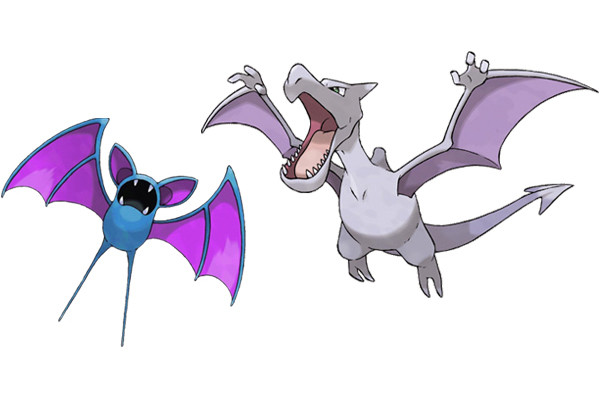
Let's kick things off with one a theory whose logic is (sort of) grounded in the real world. Zubat, the pesky bat that will always pop up as you try to work your way through a cave, is an evolution of Aerodactyl, the fossil Pokémon you can get by taking Old Amber all the way from Pewter City to Cinnabar Island. And when we say evolution we don't mean in the normal Pokémon sense; we mean the process taught in schools that takes place of millions of years.
This stems from the fact that, on a basic level they share many aspects. Aerodactyl's colour scheme is a toned down version of Zubat's, they both have pointy ears and their wings have the same basic structure; Zubat's point where Aerodactyl's claws would be.
This theory's given an added sheen of legitimacy when you consider how this would occur in the real world. Animals that exist from the cretaceous period or before tend to be those that live in the sea or deep underground, where major geographical changes have less of an effect. And considering Zubats come from dark caves, where it's likely the Aerodactyl would have slowly become a beast that uses sound over sight (losing eyes and growing ears), the theory really gains weight.
6. Gengar Is A Dead Clefable

What with all the animal based creatures in the world, Ghost Pokémon stand out as one of the weirder elements of the universe. Just where do they come from; is there a non-ghost version of Gastly, Haunter and Gengar? Well, yes, it transpires.
Fairies are another strange element of the world and could in fact be the pidge between the world of Kanto and the other side. You see, Gengar is actually the ghost of Clefable.
On a simple physical level they share a lot (pointy ears, stubby limbs, three fingers, tail, wings/spikes on their back), but there's more to it than that; both characters tend to be seen on a full moon. While that's a pretty ghostly thing anyway, could Gengar do it to honour their previous life. You can extend this to suggest that Haunter is Clefable and Generation II's Cleffa is Gastly; although there's less cosmetic similarities, it's not a huge leap.
Another, similar theory is that Gastly is a dead Cloyster without its shell. Althoughhile they do indeed look alike, there's not enough in-world logic to back it up as the Gengar-Clefable link.
5. Bulbasaur's Bulb Is An Oddish
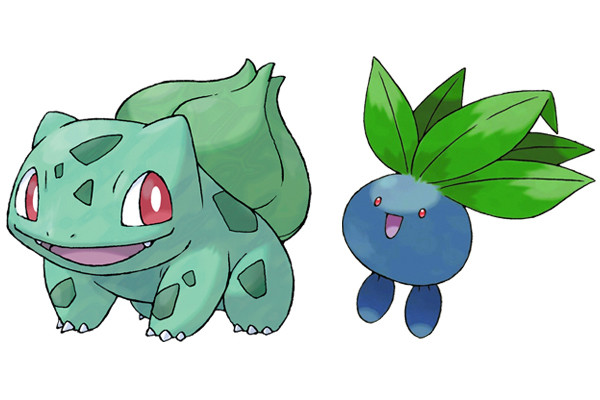
Bulbasaur, known to many as the starter Pokémon you'd never pick in a million years, hides a little secret. The Pokédex in Red and Blue states "A strange seed was planted on its back at birth. The plant sprouts and grows with this Pokémon." Clearly this isn't just any old seed; it evolves too. And what creature do we know is a bulb? Yup, Oddish is a Plant Pokémon that could easily be that seed.
Red-eyed with a leafy 'hair' that could easily collect to create the bulb on Bulbasaur's back, this theory suggests there's a symbiotic relationship between the two where they essentially become part of the same creature; it's the seed that allows Bulbasaur to photosynthesise. This is backed up by Bulbasaur's evolutions, Ivysaur and Venusaur, both having the bulb grow upwards in a pattern not dissimilar from Gloom and Vileplume respectively, Oddish's evolutions.
This does, however, come with a slight depressing slant; if the bulb evolves with the main creature, that means that the Oddish loses its own sentience to becomes part of the Blubasaur, essentially absorbed into the Pokémon.
4. Butterfree Should Be Venomoth
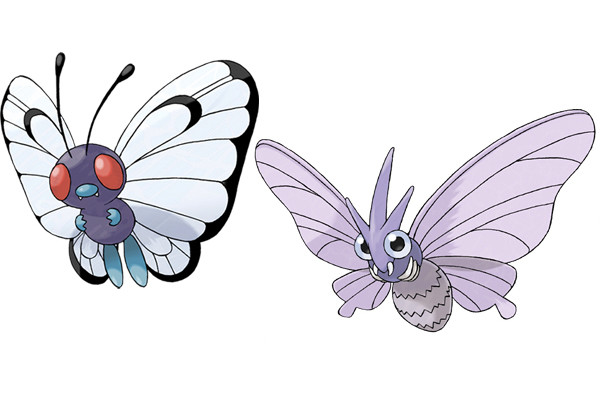
From in-world probing to production mistakes made in the game's code. Butterfree is the evolution of Caterpie and Metapod, while Venomoth (right) is the evolution of Venonat. Based on that information, you'd expect Venomoth to have a dark purple colour and big, red eyes and Butterfree to be rather angular in design with round, pupilled eyes.
But that's not the case. In fact, they're both completely the wrong way round; going on looks alone, a Venomoth really should crawl out of a Metapod.
Given how Weedle and Beedrill are clearly from the same line this is a little strange. So what's up? It's long been assumed that at some point the sprites for the two characters got switched and the mistake was never corrected. They are, after all, both purple bugs with big wings. It may not be in-world, but it's a pretty shocking mistake that was made.
This isn't the only production mistakes have allegedly made it through to publication either; looking at Psyduck and Golduck, wouldn't it make sense for their names to be switched?
3. Ditto Is A Failed Clone Of Mew
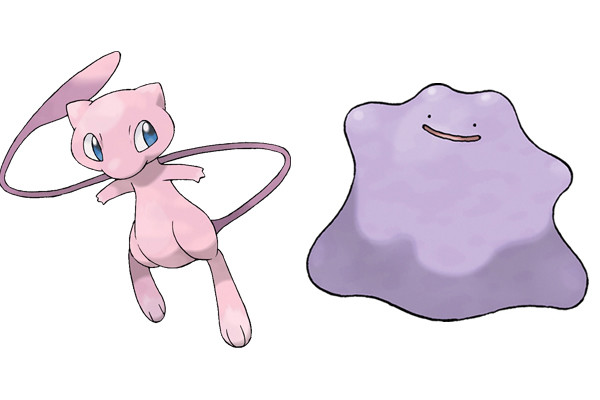
On the face of it this seems like the most ridiculous theory on this list, but it's so in-depth that in reality it's the one most likely to have been intended by the creators.
We know from the existence of Mewtwo that there's been an attempt to clone Mew and it's rather short-sighted to think they'd have got it right first time. What if an early attempt led to only parts of Mew being cloned, leading to the mimic Ditto?
Aside from the similar shade of skin it sounds crazy, right? Except that Mew and Ditto have some specifically identical stats - they're both genderless and weigh exactly 4kg - and are the only two Pokémon capable of learning the move Transform; maybe only that move was cloned. But the biggest clue of all is that Ditto is commonly seen around the place where Mew was cloned and Mewtwo was created; the Pokémon Mansion on Cinnabar Island.
It seems silly to think otherwise now. Another popular theory regarding Ditto is that some were poisoned and became sludgepile Muk, but that doesn't have the in-world evidence to back it up.
2. Voltorb Is A Pokéball Possessed By Haunter

One of the most deliriously silly theories actually answers one of the bigger questions in the Pokémon world. Namely, why is there a Pokémon that looks exactly like a Pokeball? Did somebody design the method of containing the creatures around one of the more volatile monsters as a bit of a laugh.
Well, notice how Voltorb, the Pokéball Pokémon, has very similar eye shape to Haunter (who may be the ghost of Clefairy, keep up). Could this Pokémon actually be an inanimate object (here a Pokeball) that was possessed by a Haunter who got trapped (maybe forgetting it's not quite as gaseous as the Gastly it once was), making it a whole new species. That'd explain where self-destruct comes from - its Haunter trying to escape.
OK, we'll admit this one is on the implausible side, but if we can accept failed clones and dead Pokémon, this actually isn't the big leap it first seems.
1. Cubone Is An Orphaned Baby Kangaskhan
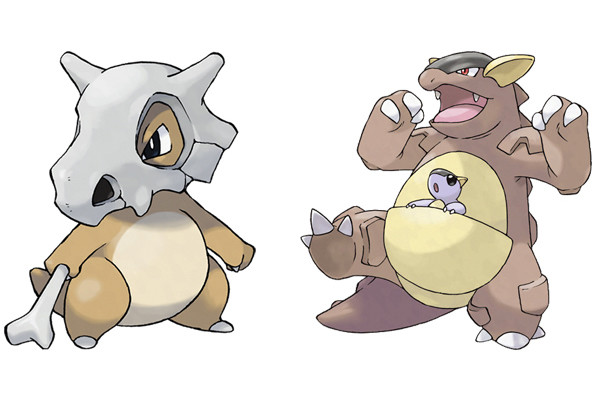
The granddaddy of Pokémon origin theories, this one is so potent and believable you'd be ridiculed for not believing it. The general gist is that Cubone, the lonely Pokémon, is actually the orphaned baby of a fully grown Kangaskhan.
The evidence? There's a lot. The Pokédex in Yellow states Cubone, "wears the skull of its deceased mother". Yes, it's extremely morbid, but opens up a deep mystery. The only Pokémon in Generation I to shown to be a mother is Kangaskhan, who carries their baby in their pouch. Cubone certainly doesn't look dissimilar from the baby Kangaskhan, while the skull could conceivably be the mother's, so it's an easy (and freaking cool) theory to accept.
It's such a popular idea fans have tried to legitimise it by linking an unseen step in the evolution of these creatures to the MissingNo glitch (look it up), although that begins to stretch credibility; it requires developer GameFreak to have for an extended period wanted to add Pokémon death into the game, a pain on both a programming and publicity side.
Another theory regarding Cubone's origins that's been doing the rounds it that he's actually a Charmander. There's a lot of similar design points, especially between the evolutions Charmeleon and Marowak, but the mother aspect of the Kanhaskhan theory make that seem more likely.
